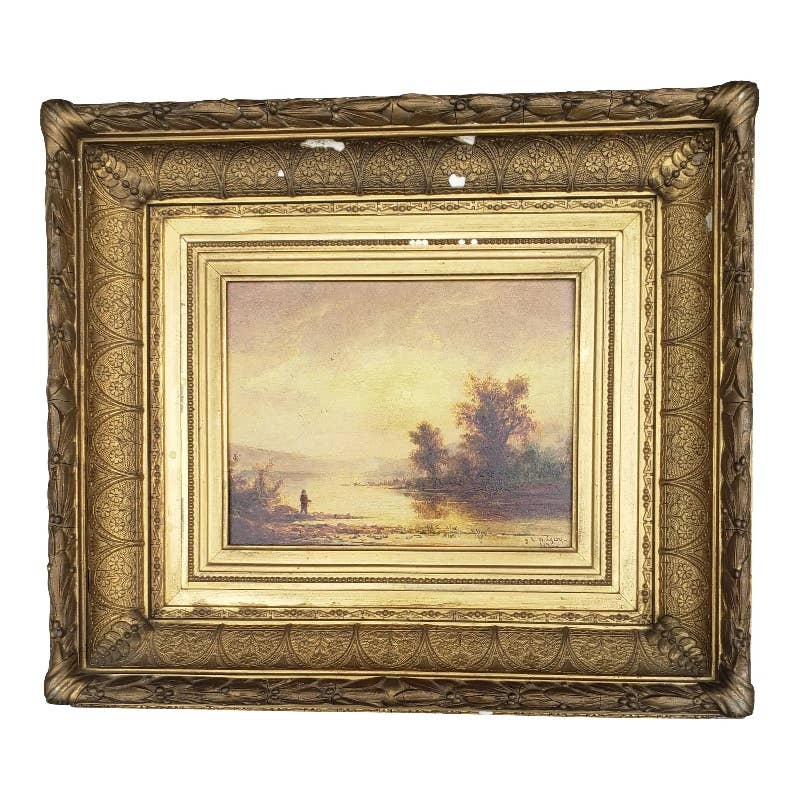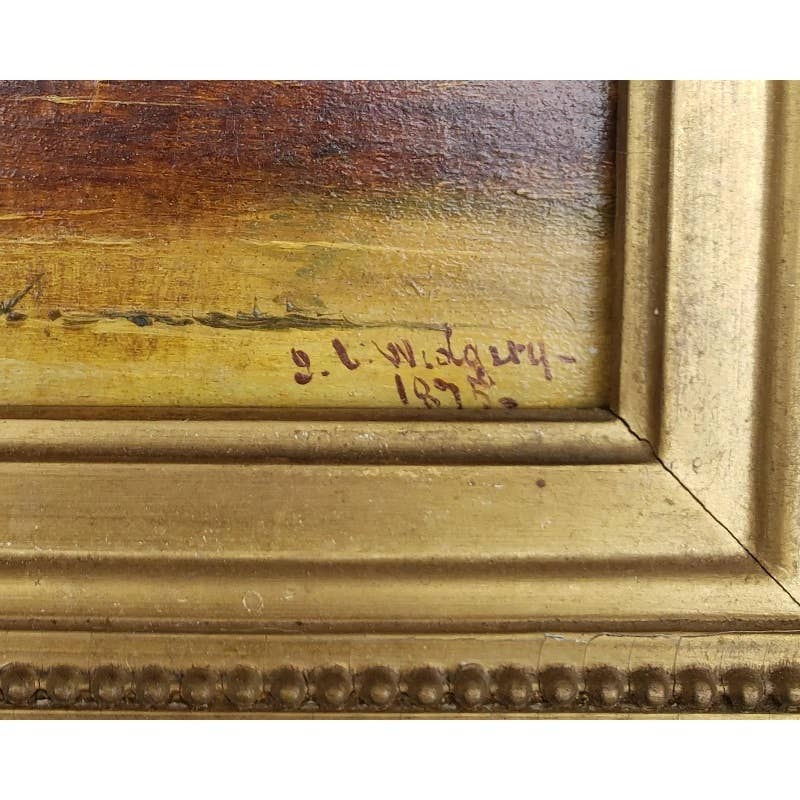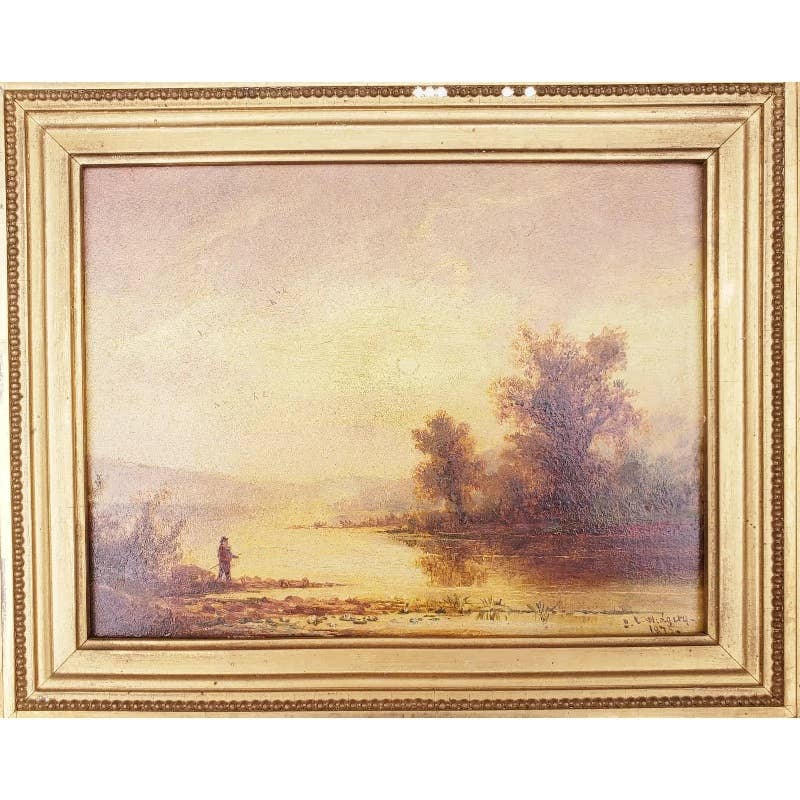1
/
of
3
gore dean
Late 19th Century Rustic Landscape Oil Painting by Julia Cornelia Widgery Griswold Slaughter
Late 19th Century Rustic Landscape Oil Painting by Julia Cornelia Widgery Griswold Slaughter
Regular price
$746.00 USD
Regular price
Sale price
$746.00 USD
Unit price
/
per
Couldn't load pickup availability
Share
Landscape by Julia Cornelia Widgery Griswold Slaughter (American 1850-1905), signed and dated 1880 lower leftNotably, Julia Widgery Slaughter was the first woman to be admitted to the American Art Union in New York.
She was born in Devonshire, England, into a family of artists whose lineage included Joseph M.W. Turner. She and her brother studied under their father, William Widgery, and at the academies in Europe. By 1868, at age eighteen, she was exhibiting at the Society of British Artists.
It was likely in 1876 that Widgery immigrated to the United States. From 1876 to 1888, the catalogues of the National Academy of Design's major Annual Exhibitions list her address as 5 East 14th Street. In her New York studio she created still-life paintings and made excursions to the Catskills to paint landscapes. In 1876, she first exhibited as Widgery; but every year from 1878-1888, the catalogues list her as Griswold, indicating that she had probably married.
However, in 1889, she met Samuel C. Slaughter, a land developer and community leader from Tacoma, Washington. That year, they left New York for Tacoma and were married. Immediately, she began a grassroots movement to increase the number of cultural activities in the state. She formed a number of art leagues in Washington, and in 1891 spearheaded the formation of the Tacoma Art League which, by the mid 20th century evolved into the current Tacoma Art Museum.
In 1892, she served as Commissioner for the Washington State Building for the World's Columbian Exposition in Chicago. In 1898, she even led a group of women painters to Dawson, Alaska, to sketch scenes of the gold rush. In 1905, diagnosed with cancer, she returned to West Cardiff, Wales, where she passed away.
Despite Slaughter's influential role Washington, relatively little has been published about the life and works of this pioneer among American women artists. Her surviving paintings are very rare.
View full details
She was born in Devonshire, England, into a family of artists whose lineage included Joseph M.W. Turner. She and her brother studied under their father, William Widgery, and at the academies in Europe. By 1868, at age eighteen, she was exhibiting at the Society of British Artists.
It was likely in 1876 that Widgery immigrated to the United States. From 1876 to 1888, the catalogues of the National Academy of Design's major Annual Exhibitions list her address as 5 East 14th Street. In her New York studio she created still-life paintings and made excursions to the Catskills to paint landscapes. In 1876, she first exhibited as Widgery; but every year from 1878-1888, the catalogues list her as Griswold, indicating that she had probably married.
However, in 1889, she met Samuel C. Slaughter, a land developer and community leader from Tacoma, Washington. That year, they left New York for Tacoma and were married. Immediately, she began a grassroots movement to increase the number of cultural activities in the state. She formed a number of art leagues in Washington, and in 1891 spearheaded the formation of the Tacoma Art League which, by the mid 20th century evolved into the current Tacoma Art Museum.
In 1892, she served as Commissioner for the Washington State Building for the World's Columbian Exposition in Chicago. In 1898, she even led a group of women painters to Dawson, Alaska, to sketch scenes of the gold rush. In 1905, diagnosed with cancer, she returned to West Cardiff, Wales, where she passed away.
Despite Slaughter's influential role Washington, relatively little has been published about the life and works of this pioneer among American women artists. Her surviving paintings are very rare.





